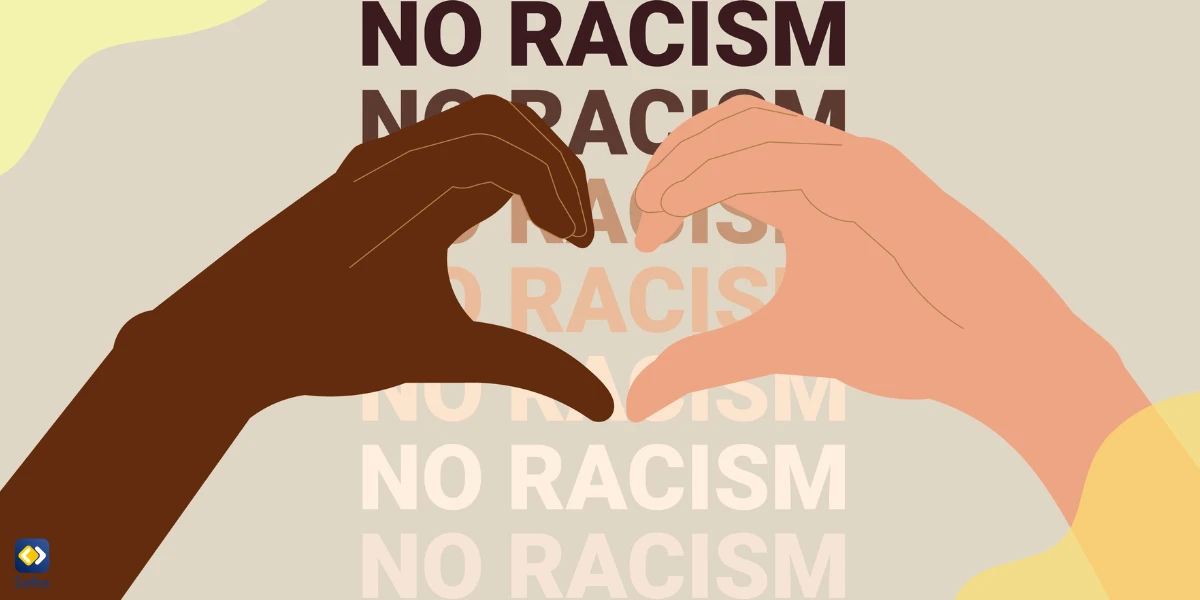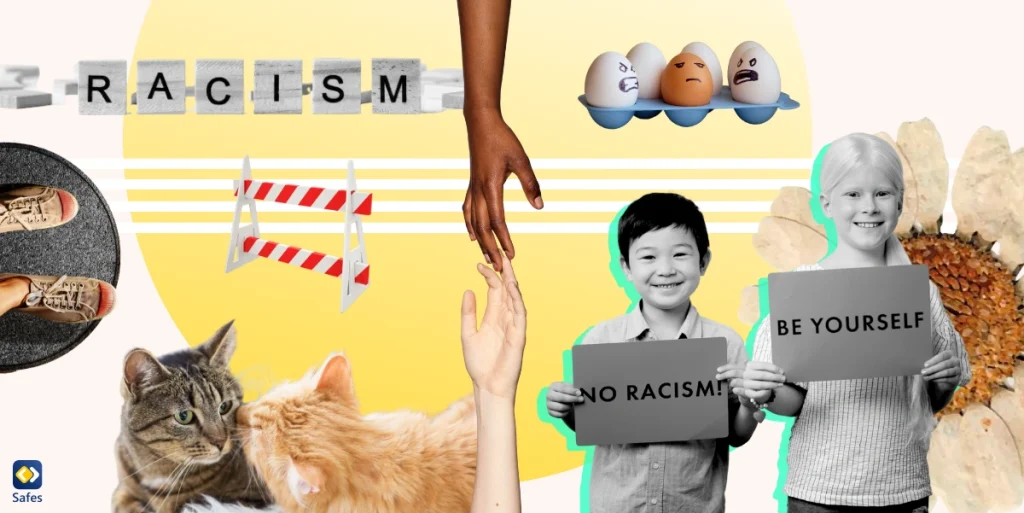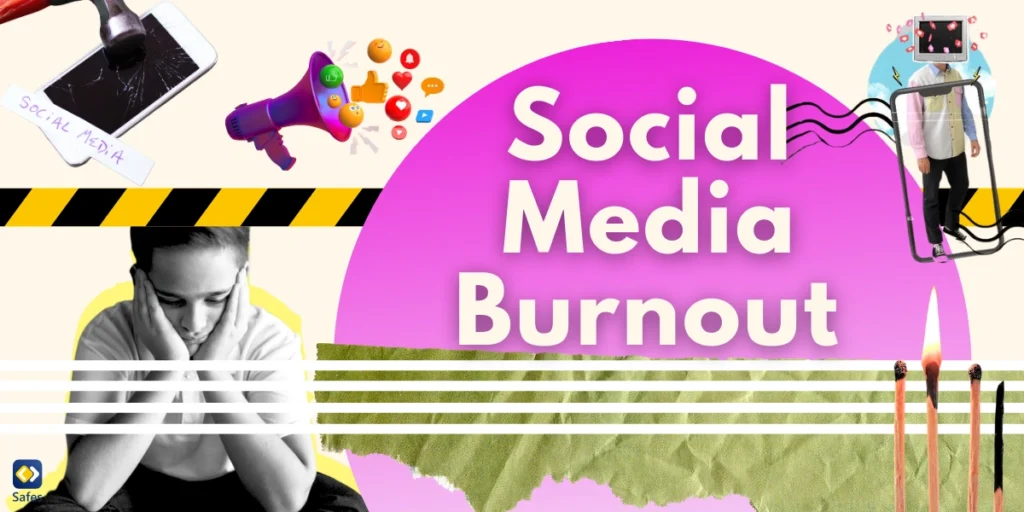In the vast digital landscape of social media, children and young people inevitably encounter harmful content, including instances of racism. Racist attitudes and behaviors on these platforms are a prevalent issue, making it crucial for parents to guide their children on identifying, comprehending, and navigating racism online. This article will explore the nature of racism and its manifestation on social media. It will also provide practical advice for parents to help their children avoid and respond to such instances effectively.
Download and Start Your Free Trial of the Safes Parental Control App
Research indicates that instances of racism on social media can significantly impact children’s mental health and wellbeing. Therefore, parents like you must take proactive steps to educate their children about the issue and equip them with the necessary tools to combat it.
Understanding Racism
Racism includes behaviors and attitudes that discriminate, harass, victimize, or devalue individuals based on race or ethnicity. It can take various forms, such as overt racism, characterized by explicit racist remarks and threats, and covert racism, which involves subtle comments or ‘microaggressions’ that devalue people based on their race.
You can find examples of racism all over the internet, especially on platforms that allow users to interact with each other. Although social media robots and human moderators put an effort to prevent or remove these offensive remarks, you can still find tons of them in comments under posts, chatrooms, and private messages.

The Dangers of Racism on Social Media for Children
The prevalence of racism on social media has profound implications for children and teenagers. They can either be perpetrators, victims, or witnesses of racism online. The damaging effects of experiencing or witnessing such incidents can lead to feelings of isolation, decreased self-esteem, and even mental health issues. Additionally, young people may inadvertently adopt racist attitudes and behaviors if they are not guided in interpreting and responding to these instances.
Initiating Conversations about Racism
Parents play a crucial role in helping their children understand and navigate the issue of racism. It is essential to initiate open and age-appropriate conversations about racism and the harmful impact it can have. Discussions should be formed by first asking children about their understanding and feelings about the issue.
Preschool-Aged Children
At this tender age, children start noticing differences among people. You should focus on acknowledging these differences positively, promoting the concept of fairness, and teaching your child to appreciate diversity.
Elementary School-Aged Children
Children in this age bracket can grasp more complex concepts. You should continue the conversation by discussing real-world instances of racism, teaching empathy, and explaining the importance of treating everyone with respect.
Middle and High School-aged Children
At this age, children can understand abstract concepts and have their own opinions. You should encourage open discussions about racism on social media, promote critical thinking, and guide them on responding appropriately to instances of racism.
Teaching Children to Recognize Racism on Social Media
Helping children identify instances of racism on social media is a crucial step in combating it. You should explain that offensive comments, jokes, images, or videos targeting someone’s race or ethnicity are forms of racism. You should also discuss the harmful impact of such content and discourage their sharing or endorsement.
- Related Article: Teaching Children How to Respond to Hate Speech Online
Promoting Empathy and Inclusivity
Celebrating diversity and promoting inclusivity can help children develop empathy and counteract the negative influence of racism. You can introduce your child to diverse cultures and perspectives through books, films, and personal interactions.

Media Literacy and Critical Thinking
Media literacy and critical thinking skills are essential for young people in the digital age. You should guide your child on how to critically evaluate the content they encounter on social media, discerning fact from opinion and recognizing biased or misleading information.
Teach your child to check these items when seeing any news on social media:
- Check Author’s Credentials
- Always Consult Other Sources
- Check the Authenticity of the Source of the Information
- Check the Links
- Check the Authenticity of Photos
Reporting and Responding to Racism on Social Media
Teaching children how to report instances of racism on social media platforms is essential. You should also discuss the importance of standing up against racism, either by voicing their disapproval or supporting those who are targeted.
Show your child the different steps they need to take to report racist comments, posts, messages, or harassment in any other form on every social media platform they use.
- Related Article: 13 Online Etiquette Rules Every Parent Should Teach Their Child
Setting Healthy Boundaries for Social Media Use
You should set healthy boundaries for your child’s social media use to protect them from harmful content. This might involve setting time limits, monitoring their online activities, and discussing appropriate online behavior. One of the tools that can help you out in setting boundaries for your child’s online activity are parental control apps.
Using Parental Control Apps to Manage Online Access
Parental control apps like Safes can be an effective tool in managing children’s access to social media, allowing parents to monitor their online activities, set boundaries, and protect them from harmful content such as instances of racism.
With Safes, you can monitor your child’s activity on popular social media and messaging apps like Facebook, Instagram, and WhatsApp. Safes will notify you if your child comes across offensive content, comments, or messages so that you can prevent harm. Moreover, you can use features such as app blocking, the web filter, and safe search to protect your child from being exposed to inappropriate content everywhere on the internet. Start your free trial with Safes today and ensure their digital safety.
Feel free to download Safes from App Store or Google Play. To learn how to put parental controls on different platforms and devices using Safes, follow the links below:
- Windows parental controls
- Macbook parental controls
- Parental controls on Android
- iPhone parental controls
Leading by Example
Parents are role models for their children. Children learn how to treat people by scanning the behaviors of people around them. You, fathers and mothers, are the closest people to your children. Unfortunately, sometimes racism becomes so commonplace that we even fail to notice it in ourselves. So, challenge your behaviors and words regarding people from different communities. Do you sense you have a biased opinion regarding a particular minority? Start by changing yourself and setting yourself as an example for your child.
By demonstrating respect for diversity, challenging racism, and promoting kindness and empathy, you can set a powerful example for your child to follow.
Resources for Further Education and Support
You can turn to various resources for further education and support on the issue of racism. Some of these resources include books, websites, and organizations dedicated to promoting racial equality and combating racism.
These articles can be a good start:
- What Is Race and Racism?
- Talking to Your Kids About Racism
- Racism and Violence: Using Your Power as a Parent to Support Children Aged Two to Five
- It’s Never Too Early to Talk With Children About Race
- Talking to Kids About Race and Other Difficult Issues
Conclusion: Social Media and Racism
Navigating the issue of racism on social media is a challenging but necessary task for parents. By initiating open conversations, teaching children to recognize and respond to racism, and setting healthy boundaries for social media use, parents can help their children navigate the digital world safely and responsibly.
Remember, it’s not a one-time conversation but an ongoing dialogue that evolves as your child grows. With patience, understanding, and the right resources, parents can equip their children with the skills and knowledge they need to combat racism on social media and promote a more inclusive and respectful online environment.
Your Child’s Online Safety Starts Here
Every parent today needs a solution to manage screen time and keep their child safe online.
Without the right tools, digital risks and excessive screen time can impact children's well-being. Safes helps parents set healthy boundaries, monitor activity, and protect kids from online dangers—all with an easy-to-use app.
Take control of your child’s digital world. Learn more about Safes or download the app to start your free trial today!




